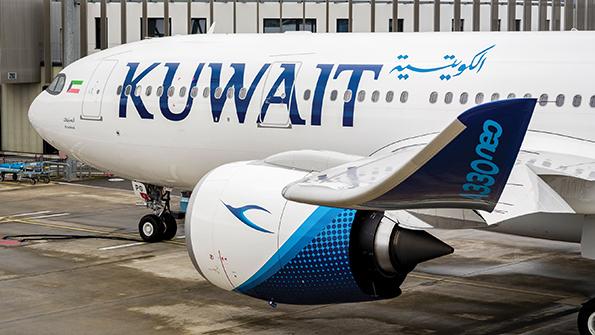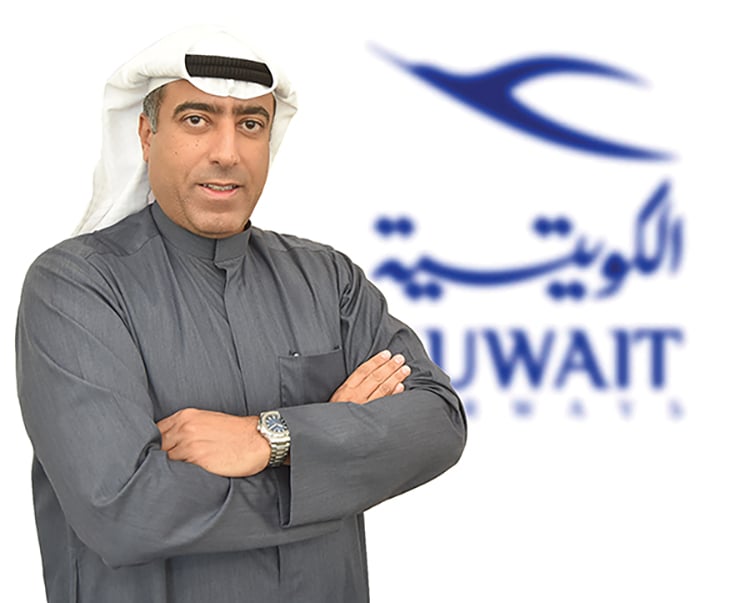
Kuwait Airways was the launch customer for the Airbus A330-800, taking delivery of the first two aircraft in October 2020.
Established in 1954, government-owned Kuwait Airways operates a fleet of 34 aircraft, making it one of the region’s smallest carriers. That fleet comprises almost all Airbus narrowbodies and widebodies—the airline was the launch customer for the A330-800—with the exception of 10 Boeing 777-300ERs, five of which are leased.
Maen Razouqi became CEO in October 2021, before which he was president and general manager for the Northern Middle East region at Schlumberger, the world’s largest energy services company.
– Interview by KURT HOFMANN

Where is Kuwait Airways focused in terms of growth? Our growth strategy is based on two parts. First is on organic growth. The Kuwait market is for about 15 million passengers a year and our capacity today is for around 5 million passengers, so there is a lot for us to tap into. It is very important, therefore, for us to start building our capacity. Looking to that, we realized our limitations in terms of the number of aircraft and network capabilities that we have. We either needed to be lighter in assets or to have a broader network plan [via partners]. That was a very important exercise for us to do. So, for example, you can now go to South America by flying to Madrid with Kuwait Airways and on to South America with Air Europa, or to Abu Dhabi and on with Etihad. It’s about cooperating with airlines that have the same DNA. We are looking for similar opportunities to Southeast Asia and are in deep discussions. The same goes for beyond New York JFK. We want to be as [asset] light as possible, but able to offer broader capability to serve our customers.
Would membership of a global alliance serve that ambition? We tried to come up with a hybrid. And a hybrid means working with partners specifically that are going to give us a point-to-point network. And that’s because we know what the customer wants. And we also know where the gaps and limitations are. If you understand your limitations, you understand the customer. Selecting codeshare partners like Air Europa, ITA, Etihad and Turkish Airlines works for our model. By the end of this year, we are targeting to have 60 point-to-point destinations as well as another 100 beyond those destinations with our [codeshare] partners.
Where do things stand with your company restructuring? We completed the first part in the 2022 first quarter and we reduced the management team by 20%, which had never been done before in the history of Kuwait Airways. Our fleet will be at around 50 aircraft by 2030. We are investing lots of money in new onboard products, like the new Elite suite, Comfort Plus and Comfort seats, and different travel classes onboard our Airbus A330neo fleet. There’s also a limousine car service, a new Elite lounge, and innovative onboard menus. The future of aviation in Kuwait is very bright, the customer base is here, and demand is high. We want to be the world’s most efficient airline.
The government of Kuwait has been trying to privatize the carrier for a long while now, but it has never happened. Could that change? We are government-owned entity with 100% ownership by the Kuwait Investment Authority and we have to follow the guidance accordingly by our shareholders. I don’t compare us to the other regional super-hub carriers, which have different type of strategy. We cannot compare ourselves with Emirates or Qatar Airways. The Kuwait market is a big market with about 5 million people. So let us focus on our market, with the government supporting us.
Kuwait Airways was launch customer for the A330-800, which is powered by the Rolls-Royce Trent 7000. How is the aircraft performing? It was a challenging startup. The passenger feedback is excellent. We formed a TotalCare agreement with Rolls-Royce to help mitigate any risk of performance misses. The fact is, the lifecycle of the engine is evolving as we speak. But it is a give and take. We believe the A330-800 will be an enabler for us to fly nonstop from Kuwait to North America … it will take us to New York JFK on better margins. We also have seven A330-900s on order, the first of which is scheduled for delivery in the third quarter of 2024. The -900 will give us the capacity that we need. Several A330-900s will be configured in a high-density configuration, to use on routes like to Manila with more economy class seats.
Are you anticipating any aircraft delivery delays with the new A330s? I hope there will not be any delays. The promise from our partner Airbus is that there should not be delays. We will keep our four A330-800s and will not replace them with the larger A330-900, even though the A330-900 will offer a better economical footprint.
What will your new fleet ultimately look like? Kuwait Airways’ future fleet will be based on a 60% narrowbody to 40% widebody ratio. Besides operating A320s and the A320neo, we also have six A321neos and three A321LRs on order; the first should arrive as early as the end of 2024. We are also exploring potential additional aircraft. But this is a separate exercise. The A321LR will be a game changer and will take us as far as Manchester, UK—probably as far as Bangkok. In 2023, the airline will add two A320neos. We definitely need to think beyond 2030 sooner rather than later.





